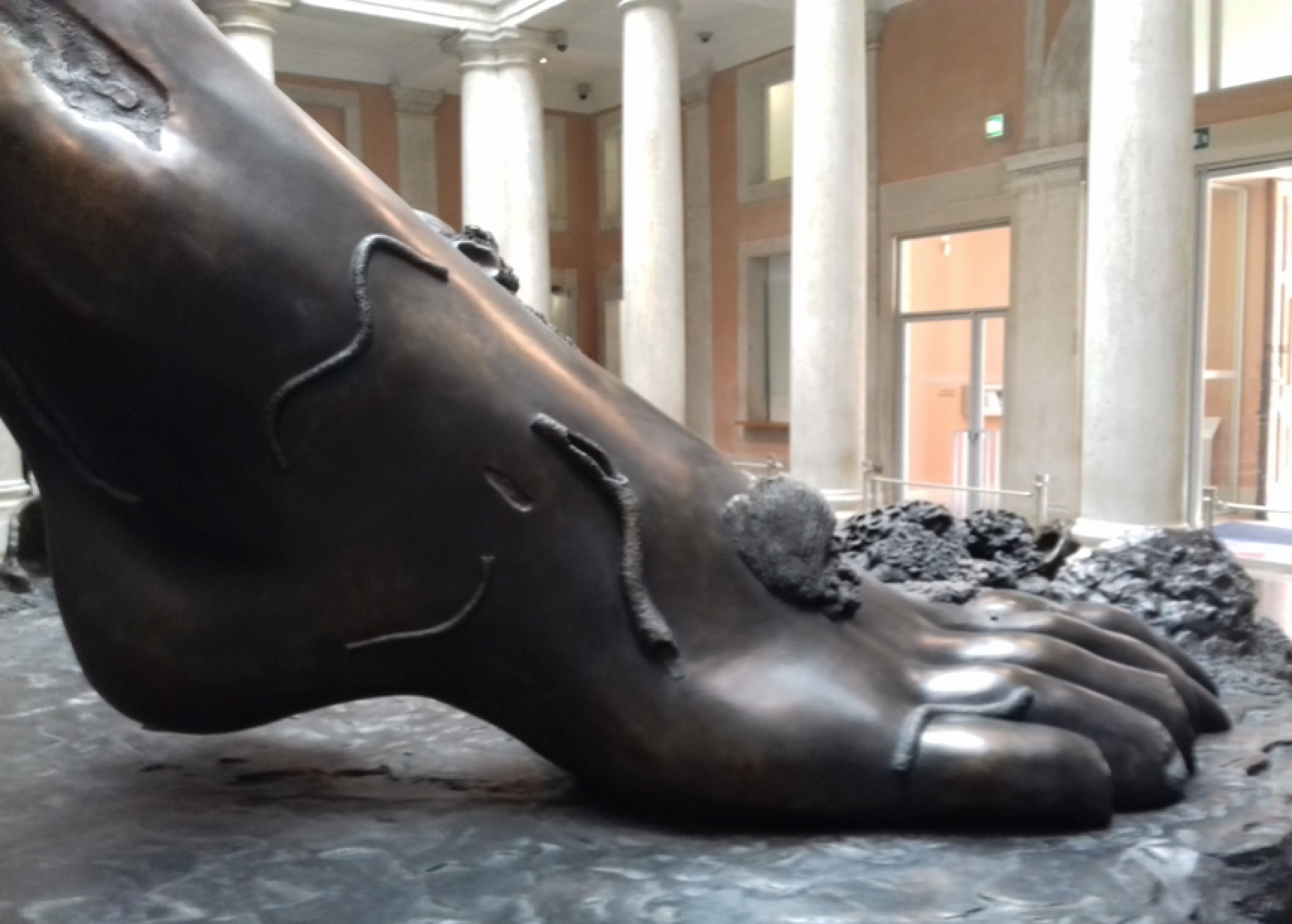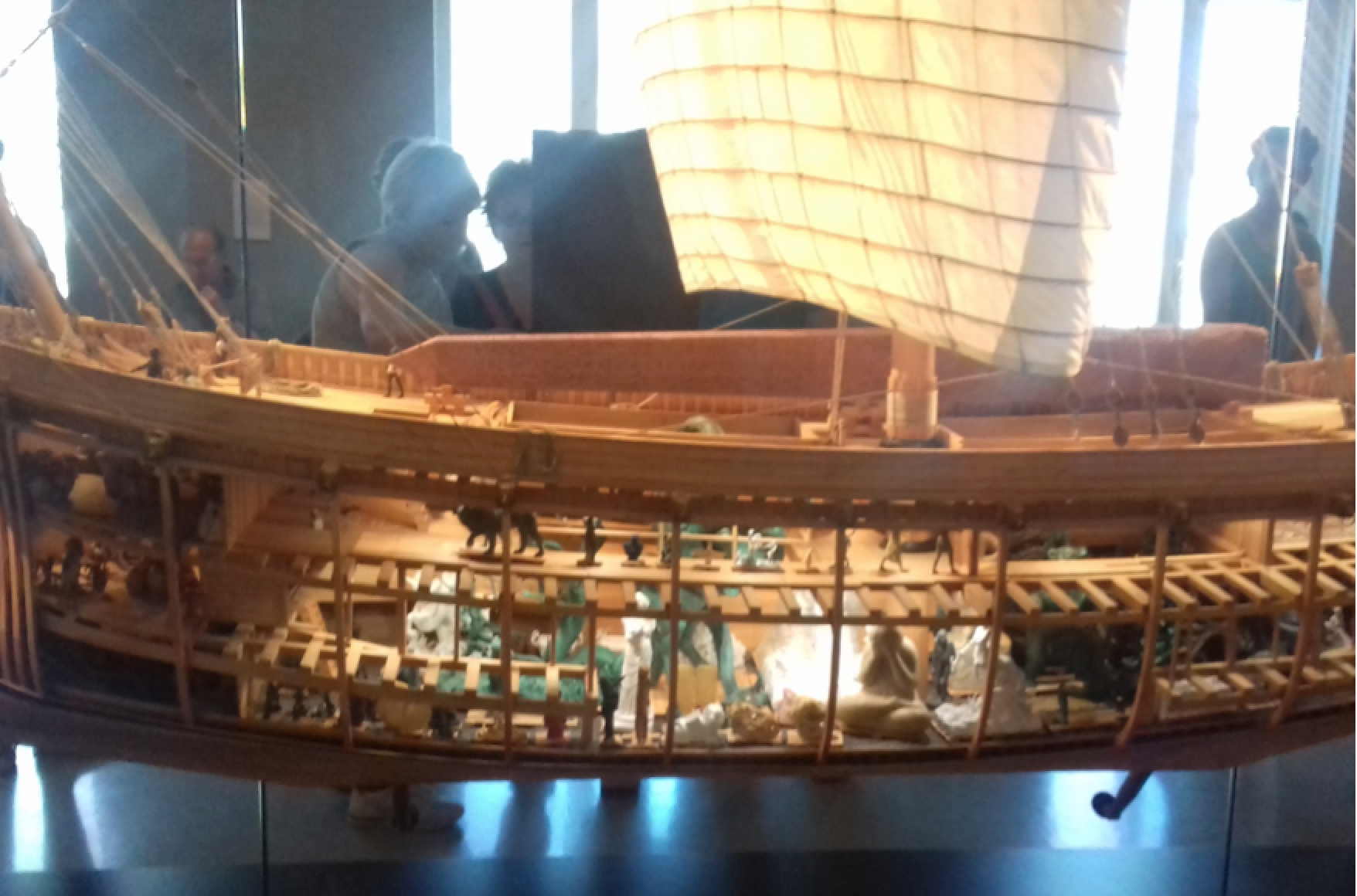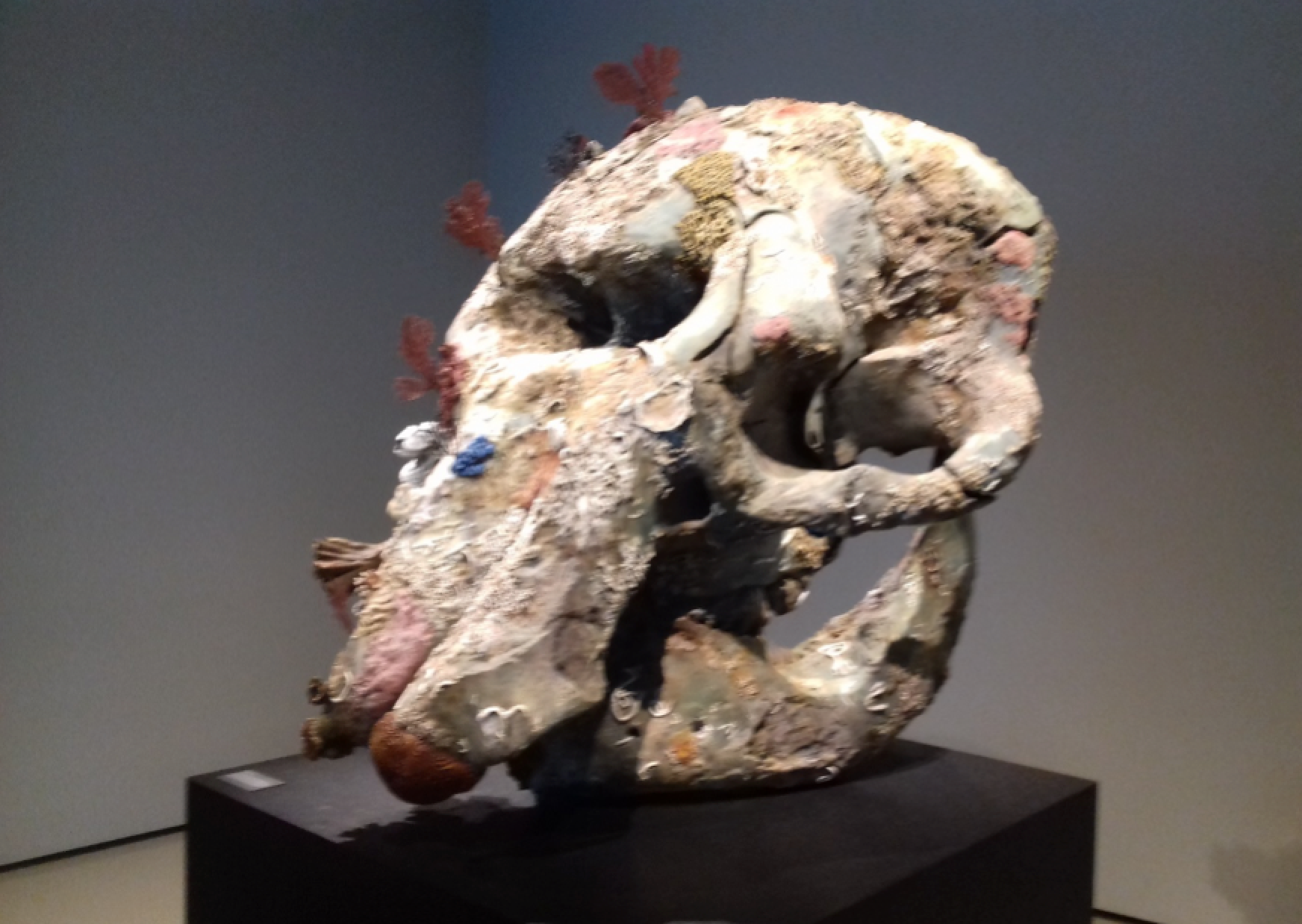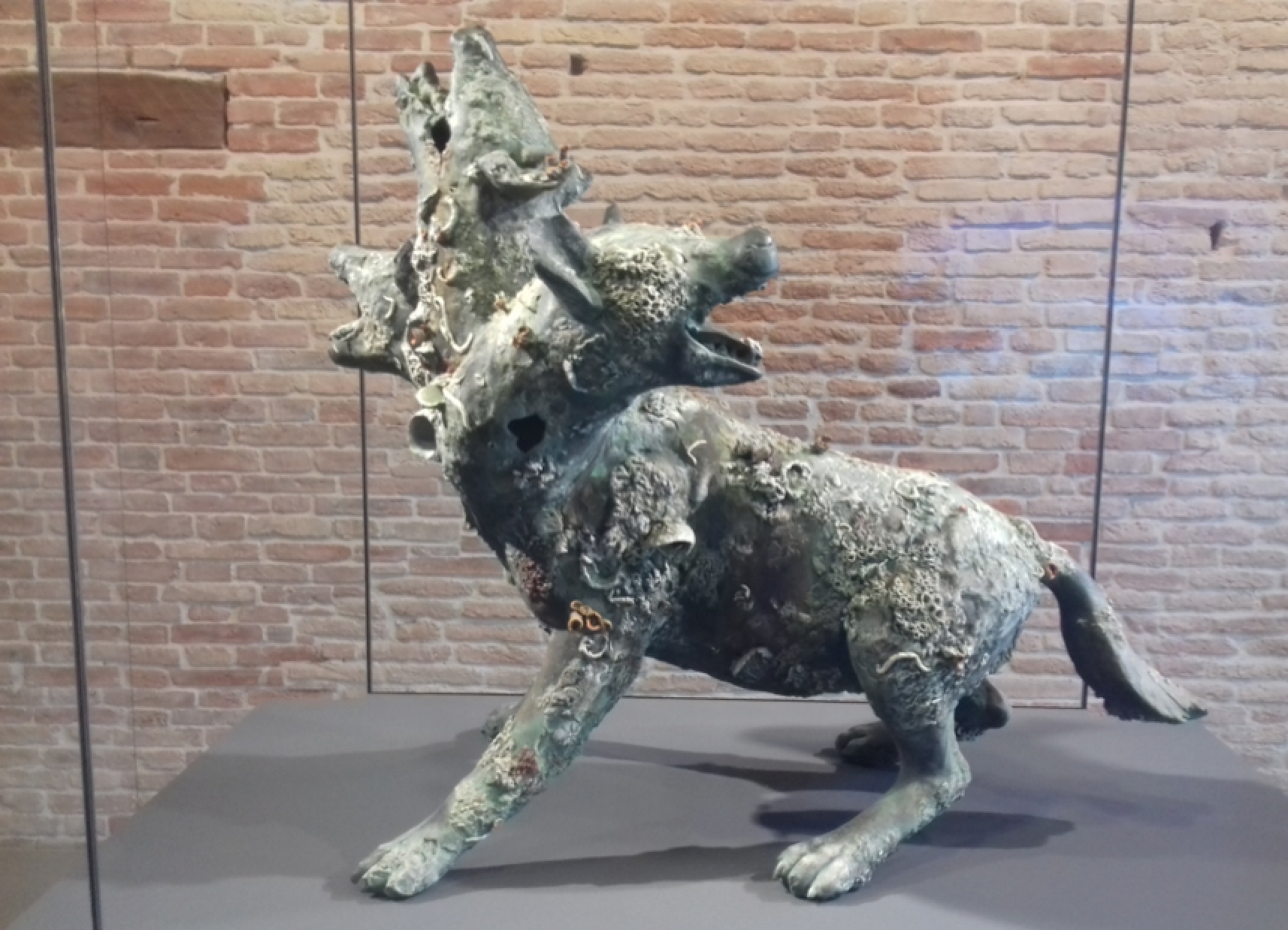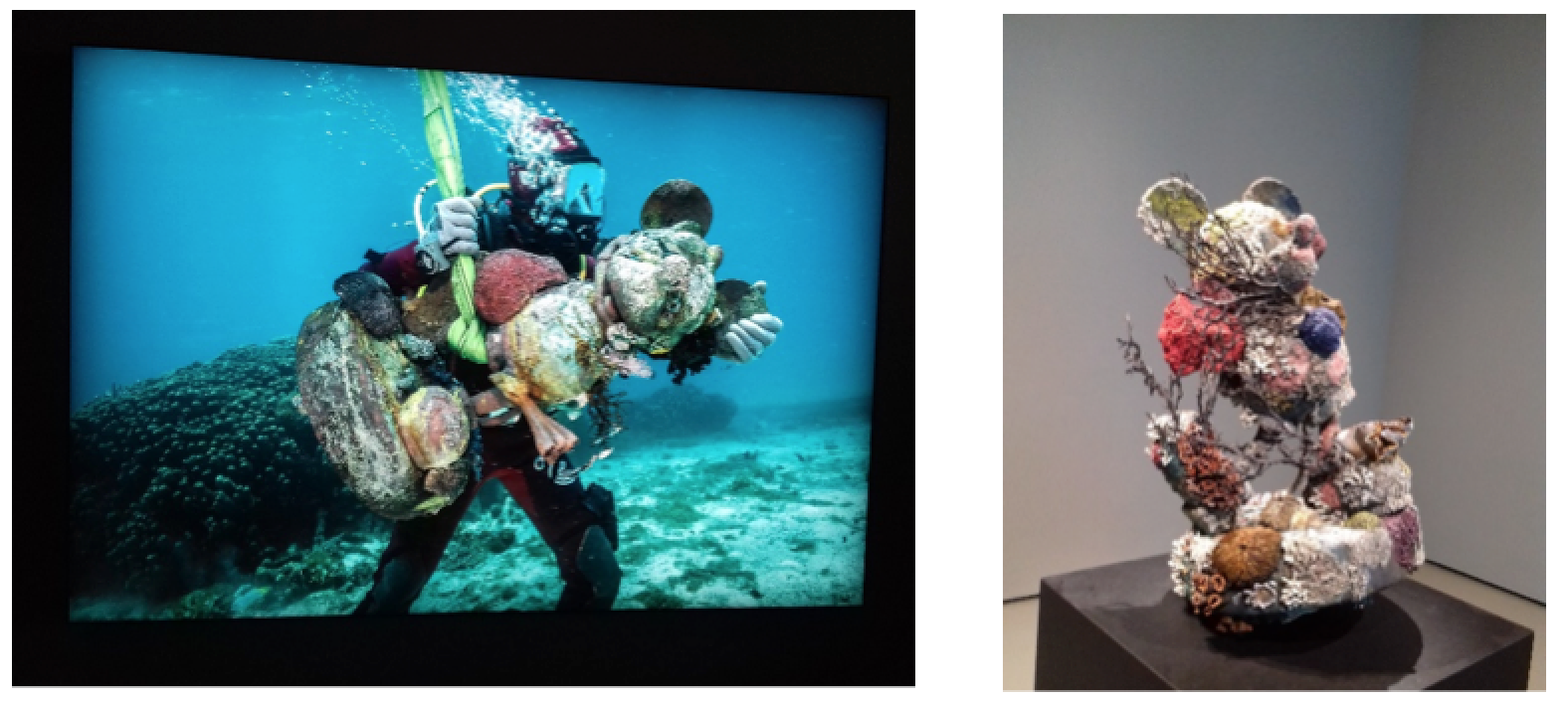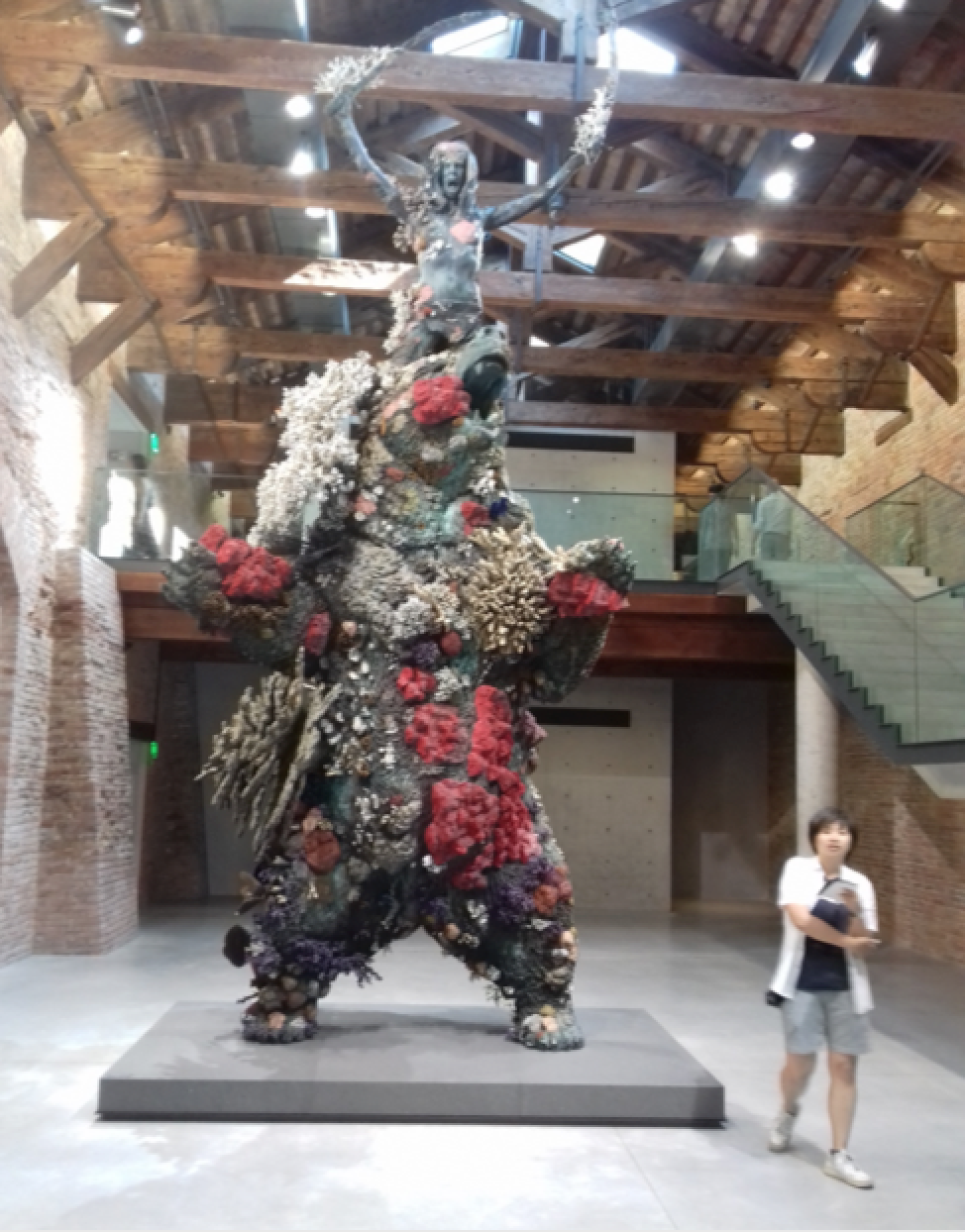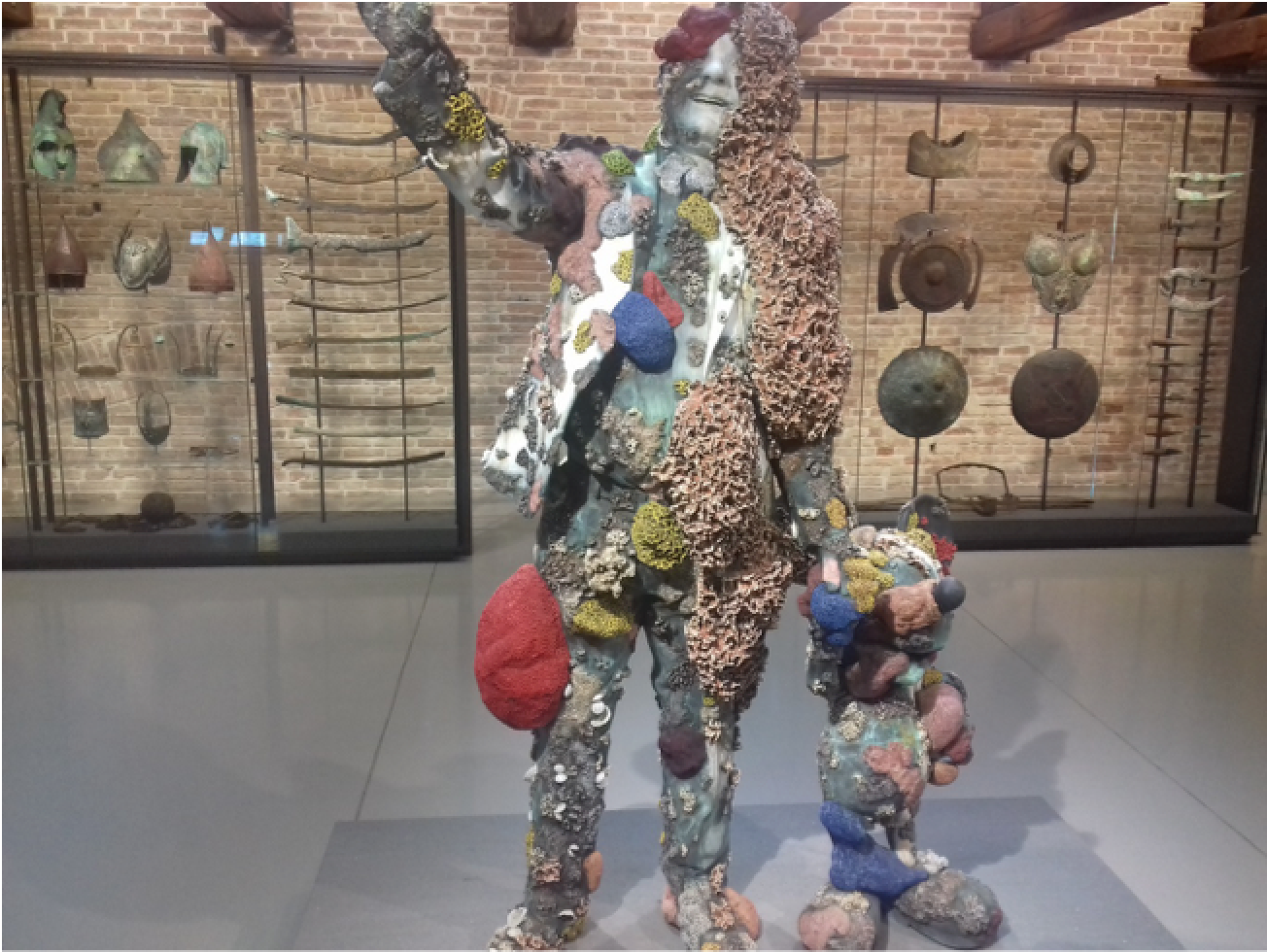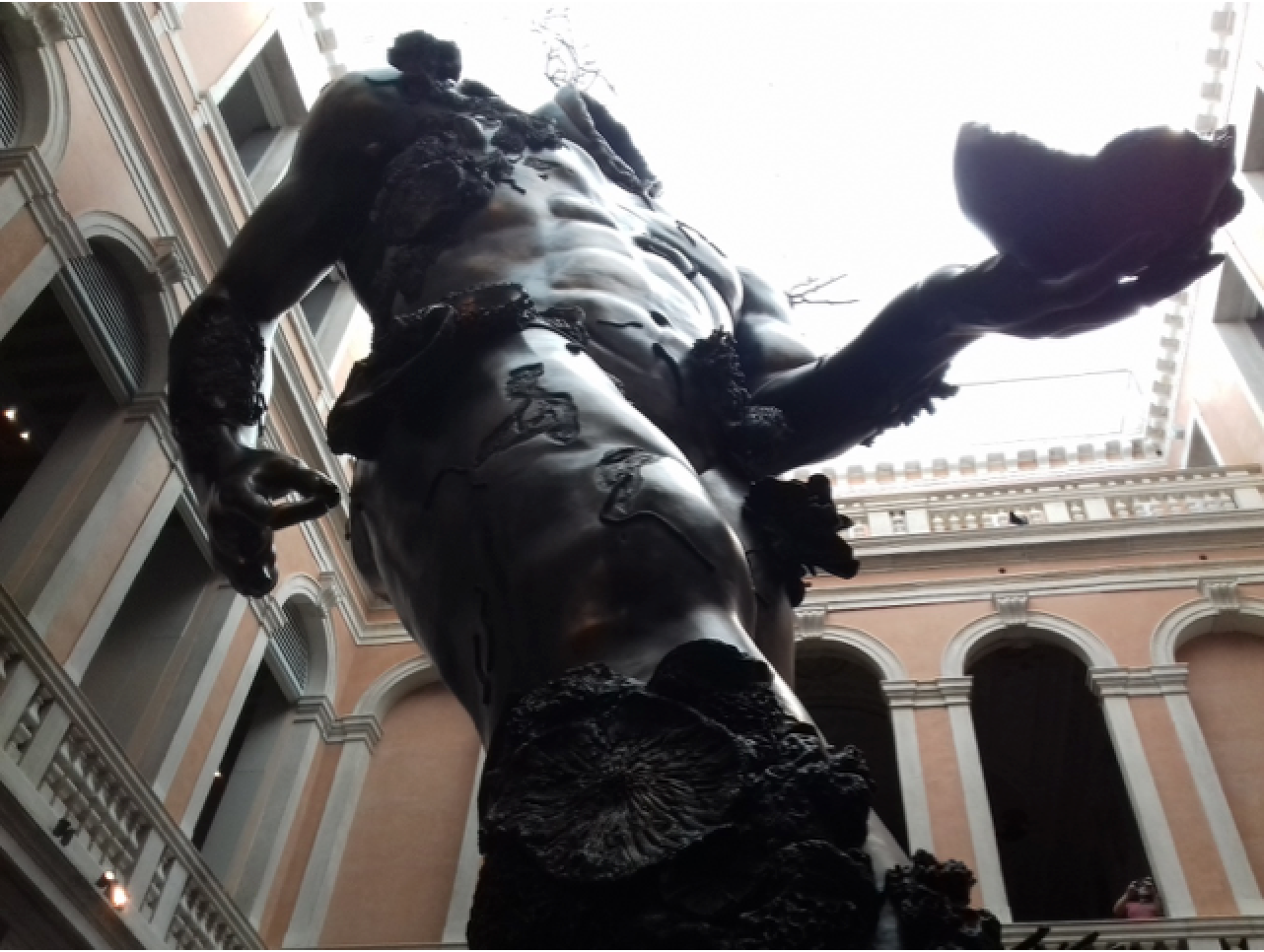The animated films A Glimpse of Teenage Life in Ancient Rome, and Four Sisters in Ancient Rome created believable worlds via animation, another example is Treasures from the Wreck of the Unbelievable currently on show at the Venice Biennale – this month’s blog by Ray Laurence (Professor of Ancient History at Macquarie University) examines how Classical Myth informs this astounding show by Damien Hirst.
Damien Hirst has created a set of objects that purport to have been found in 2008 off the coast of East Africa from a ship named the Unbelievable. It was owned by a freed slave, who was a wealthy collector, and had 100 fabled treasures. The choice of a freed slave living in the first to second century AD is very much a Trimalchio figure from Petronius’ Satyrica. All the objects have, of course, been made in the 21st century playing on the idea that ‘Somewhere between lies and truth lies the truth’, but alongside these objects are films and photographs showing their recovery – using of course various talking heads. There is even a model of the ship – The Unbelievable – with research credited to the University of Southampton’s Centre for Maritime Archaeology.
For fans of Classical Myth, there is much research behind the objects that brings to life stories with references in the catalogue and labels that are, at times, deliberately playful. The skull of a mammoth explains how the concept of a one eyed cyclops could have been created in antiquity. The mammoth’s large central nasal cavity created the position of the cyclops’ eye.
There are shockers though – Cronos Devouring his Children is thankfully one of the presented with coral and seal life covering it, Zeus is represented as a baby crying whilst his elder siblings are dismembered and eaten.
Cerberus, the three headed hound, pops up in at least two places in the show and the severed head of Medusa appears in a number of exhibits with a note that her blood dripping from her neck was thought to have created coal.
Objects in gold have been created for the exhibit including jewellery and coins. Captions vary though – Andromeda and the Sea Monster remains somewhat unexplained and, in the very next room, up pops Goofy to be followed in the following room by Mickey – who we later discover is the freed slave or the collector’s best friend.
The young girls at the Athenian Sanctuary of Brauron are represented by a vast grizzly bear with female warrior. Here, an explanation of the lost-wax technique of manufacture is provided, which is traced to China, Egypt and Peru – as well as to Athens. Interestingly, no attempt has been made to recreate Greek red and black figure vases.
There is much more than the Classical Past though, we are taken through Mayan Calendar Stones, Hittite Lion Women, a Sphinx from Egypt, to Hindu mythology and then there is Mickey and Goofy to turn the seemingly believable into the Unbelievable.
What is also apparent is the uncertainty if some objects such as the ancient helmets have been manufactured in the 21st century or simply brought on the antiquities market. Maybe the show’s greatest success is The Fate of a Banished Man – an incomplete colossal statue missing its head.
In the end, you have to see the show as a series of fragments curated into a collection with a story that features its own rediscovery via archaeology. There is also a sense of the futility or inauthenticity of collecting and the display of collections – grasped perhaps as a form of obsession that may have taken control of the fictional collector. Yet, at the same time, the show is simply fascinating and amusing – as we marvel at our own ability to believe the Unbelievable. It also engaged two boys in Year 7 and Year 8 and that really is an achievement!
The Treasures from the Wreck of the Unbelievable. Damien Hirst is on show at Punta della Dogana and Palazzo Grassi in Venice through to 3 December 2017.
